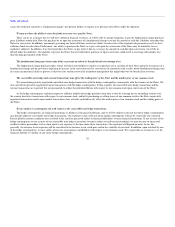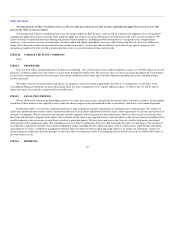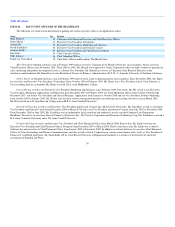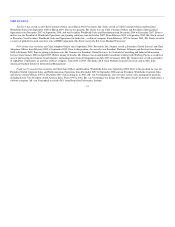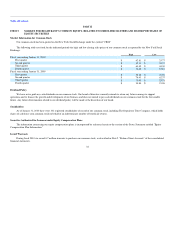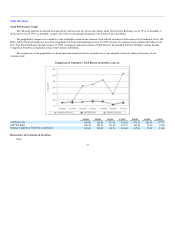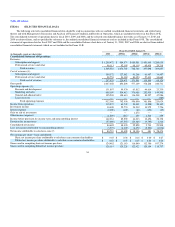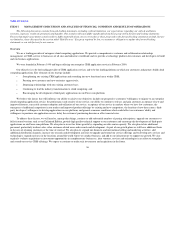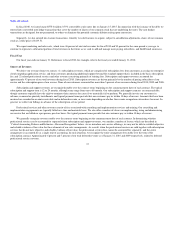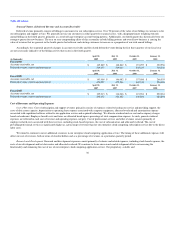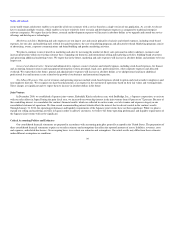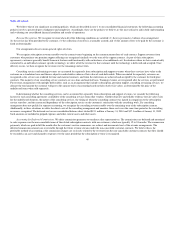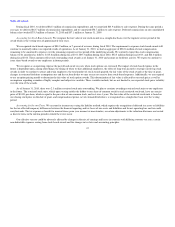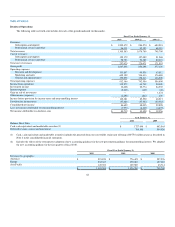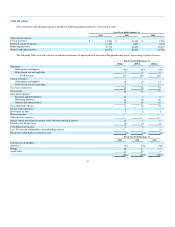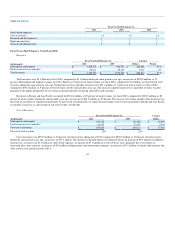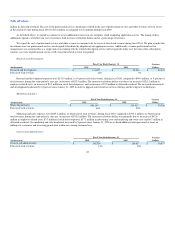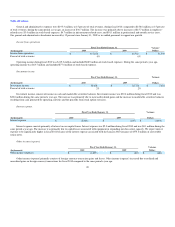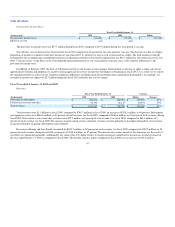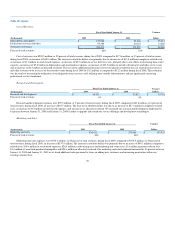Salesforce.com 2009 Annual Report Download - page 41
Download and view the complete annual report
Please find page 41 of the 2009 Salesforce.com annual report below. You can navigate through the pages in the report by either clicking on the pages listed below, or by using the keyword search tool below to find specific information within the annual report.
Table of Contents
Seasonal Nature of Deferred Revenue and Accounts Receivable
Deferred revenue primarily consists of billings to customers for our subscription service. Over 90 percent of the value of our billings to customers is for
our subscription and support service. We generally invoice our customers in either quarterly or annual cycles, with a disproportionate weighting towards
annual billings in the fourth quarter, primarily as a result of large enterprise account buying patterns. Additionally, our fourth quarter has historically been our
strongest quarter for new business. The year on year compounding effect of this seasonality in both billing patterns and overall new business is causing the
value of invoices that we generate in the fourth quarter for both new and existing customers to increase as a proportion of our total annual billings.
Accordingly, the sequential quarterly changes in accounts receivable and the related deferred revenue during the first three quarters of our fiscal year
are not necessarily indicative of the billing activity that occurs in the fourth quarter.
(in thousands)
April 30,
2009
July 31,
2009
October 31,
2009
January 31,
2010
Fiscal 2010
Accounts receivable, net $ 145,869 $ 168,842 $ 191,297 $ 320,956
Deferred revenue, current and noncurrent 549,373 549,010 545,435 704,348
April 30,
2008
July 31,
2008
October 31,
2008
January 31,
2009
Fiscal 2009
Accounts receivable, net $ 143,909 $ 146,982 $ 157,680 $ 266,555
Deferred revenue, current and noncurrent 470,297 479,546 469,534 594,026
April 30,
2007
July 31,
2007
October 31,
2007
January 31,
2008
Fiscal 2008
Accounts receivable, net $ 105,013 $ 114,046 $ 121,961 $ 220,061
Deferred revenue, current and noncurrent 295,672 321,852 340,808 480,894
Cost of Revenues and Operating Expenses
Cost of Revenues. Cost of subscription and support revenues primarily consists of expenses related to hosting our service and providing support, the
costs of data center capacity, depreciation or operating lease expense associated with computer equipment, allocated overhead and amortization expense
associated with capitalized software related to our application service and acquired technology. We allocate overhead such as rent and occupancy charges
based on headcount. Employee benefit costs and taxes are allocated based upon a percentage of total compensation expense. As such, general overhead
expenses are reflected in each cost of revenue and operating expense category. Cost of professional services and other revenues consists primarily of
employee-related costs associated with these services, including stock-based expenses, the cost of subcontractors and allocated overhead. The cost of
providing professional services is significantly higher as a percentage of revenue than for our enterprise cloud computing subscription service due to the direct
labor costs.
We intend to continue to invest additional resources in our enterprise cloud computing application service. The timing of these additional expenses will
affect our cost of revenues, both in terms of absolute dollars and as a percentage of revenues, in a particular quarterly period.
Research and Development. Research and development expenses consist primarily of salaries and related expenses, including stock-based expenses, the
costs of our development and test data center and allocated overhead. We continue to focus our research and development efforts on increasing the
functionality and enhancing the ease of use of our enterprise cloud computing application service. Our proprietary, scalable and
38


